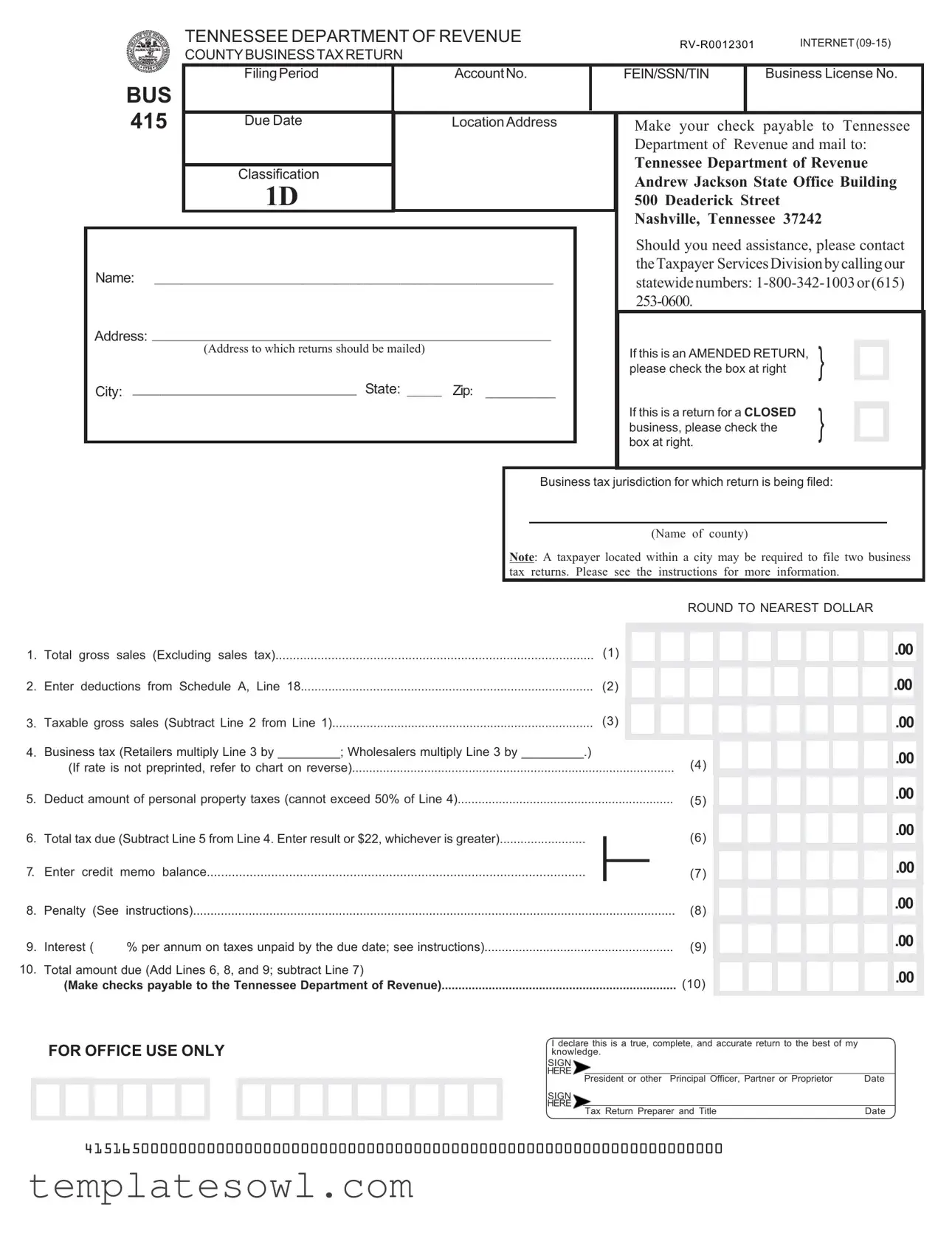Completing the Tennessee Bus 415 form can be straightforward, but many individuals make mistakes that can lead to delays in processing or even penalties. One common error is failing to check the appropriate boxes for whether the return is amended or if the business is closed. Leaving these sections unchecked can create confusion for tax authorities, potentially leading to unnecessary follow-up communications.
Another frequent oversight involves not rounding amounts correctly to the nearest dollar. The form explicitly requires rounding, but sometimes individuals enter exact figures without rounding, which can lead to discrepancies. This simple calculation can be the difference between a return being accepted or rejected by the Tennessee Department of Revenue.
People also often forget to include the classification of the business when filling out the form. Providing the specific tax jurisdiction where the return is being filed is crucial. Without this information, the return may not be processed correctly, potentially putting the business at risk of penalties or increased scrutiny.
Sometimes, taxpayers miscalculate their deductions. It's important to ensure accuracy when subtracting deductions from the gross sales. Review each deduction item carefully and refer to Schedule A if necessary to validate amounts. Any errors in deductions can skew the taxable gross sales and impact the overall tax due.
Another mistake many make is neglecting to fill in the FEIN/SSN/TIN correctly. Inputting this number inaccurately can cause significant delays in processing since the tax authority relies on these identifiers to match the return with the corresponding business entity.
There's also the issue of not keeping records to substantiate claimed deductions. Each deduction requires that adequate records are maintained. If the records aren't available, the deductions may be disallowed, leading to unexpected tax liabilities down the line.
People occasionally overlook signing the form. Both the principal officer and the tax preparer need to provide signatures and the corresponding dates. A missing signature is a common error that can halt the entire process, requiring additional communication to rectify.
Lastly, individuals often misunderstand the tax rates applicable to their business classification. It's crucial to refer to the chart provided on the form and ensure that the correct tax rate is being utilized. Failing to do so can result in underpayment or overpayment, complicating the tax situation.







 .00
.00










































 .00
.00





 .00
.00





 .00
.00





 .00
.00





 .00
.00




 .00
.00




 .00
.00





 .00
.00





 .00
.00





 .00
.00





 .00
.00





 .00
.00





 .00
.00






 .00
.00